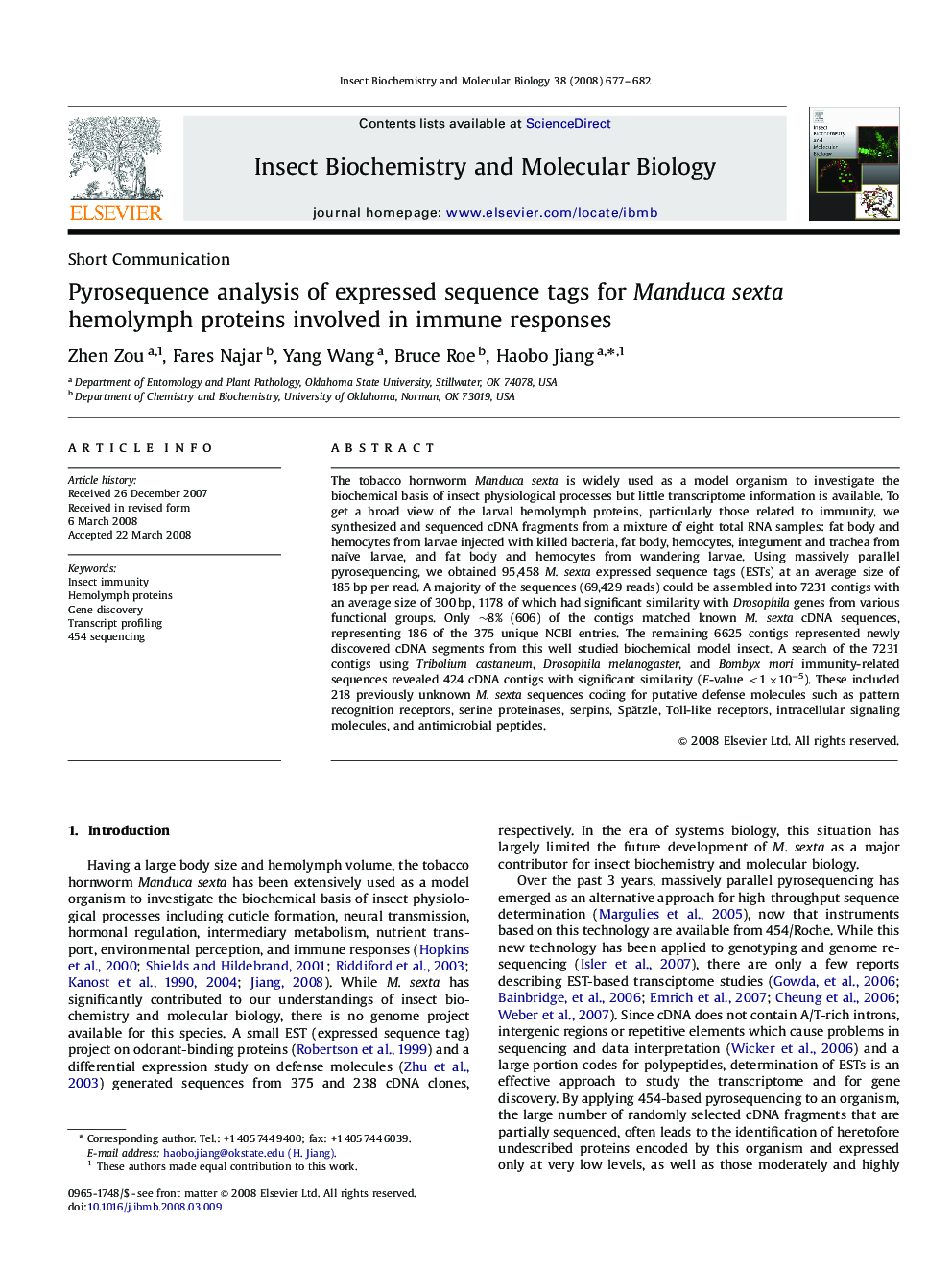| Article ID | Journal | Published Year | Pages | File Type |
|---|---|---|---|---|
| 1982852 | Insect Biochemistry and Molecular Biology | 2008 | 6 Pages |
The tobacco hornworm Manduca sexta is widely used as a model organism to investigate the biochemical basis of insect physiological processes but little transcriptome information is available. To get a broad view of the larval hemolymph proteins, particularly those related to immunity, we synthesized and sequenced cDNA fragments from a mixture of eight total RNA samples: fat body and hemocytes from larvae injected with killed bacteria, fat body, hemocytes, integument and trachea from naïve larvae, and fat body and hemocytes from wandering larvae. Using massively parallel pyrosequencing, we obtained 95,458 M. sexta expressed sequence tags (ESTs) at an average size of 185 bp per read. A majority of the sequences (69,429 reads) could be assembled into 7231 contigs with an average size of 300 bp, 1178 of which had significant similarity with Drosophila genes from various functional groups. Only ∼8% (606) of the contigs matched known M. sexta cDNA sequences, representing 186 of the 375 unique NCBI entries. The remaining 6625 contigs represented newly discovered cDNA segments from this well studied biochemical model insect. A search of the 7231 contigs using Tribolium castaneum, Drosophila melanogaster, and Bombyx mori immunity-related sequences revealed 424 cDNA contigs with significant similarity (E-value <1×10−5). These included 218 previously unknown M. sexta sequences coding for putative defense molecules such as pattern recognition receptors, serine proteinases, serpins, Spätzle, Toll-like receptors, intracellular signaling molecules, and antimicrobial peptides.
